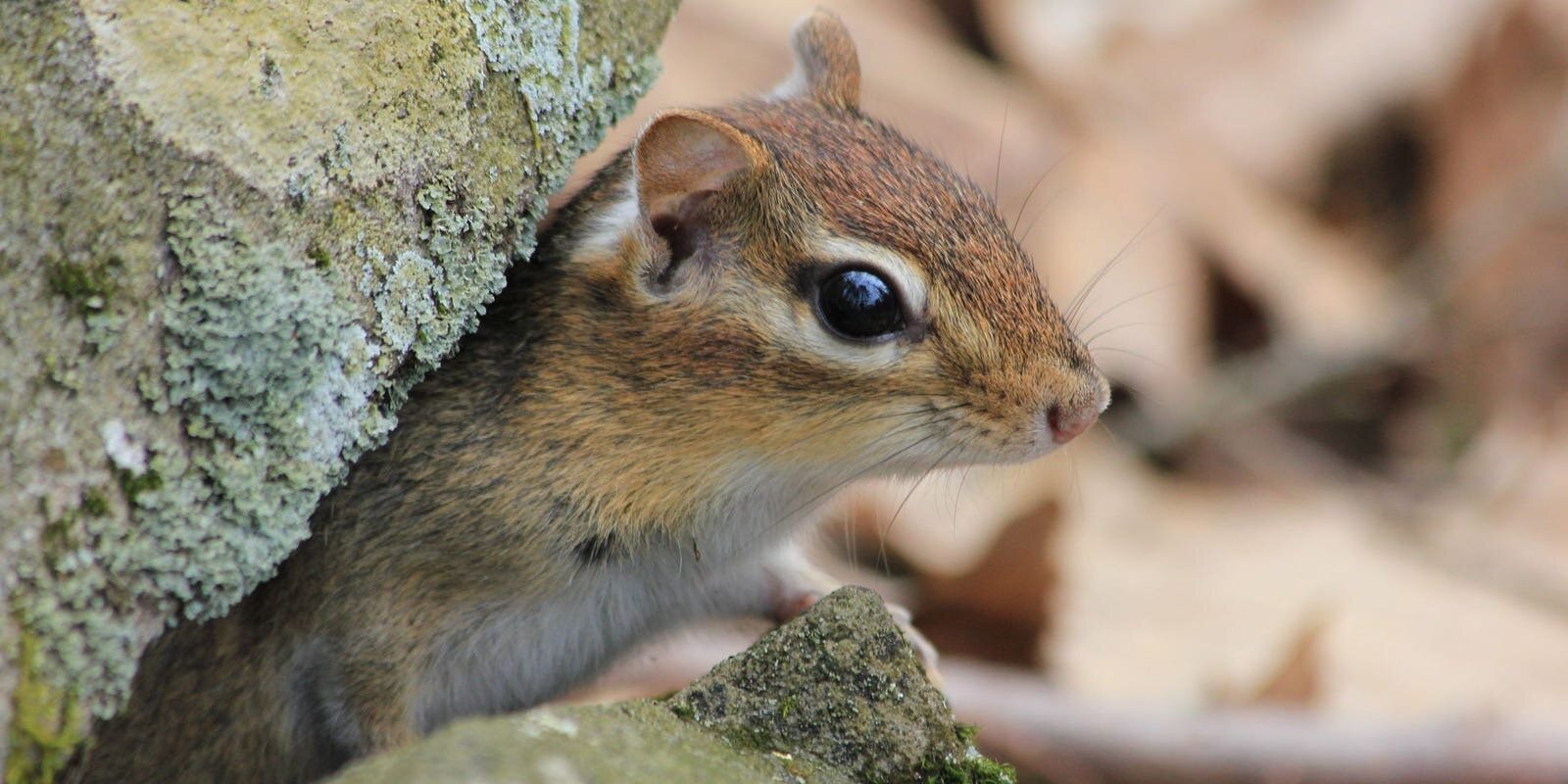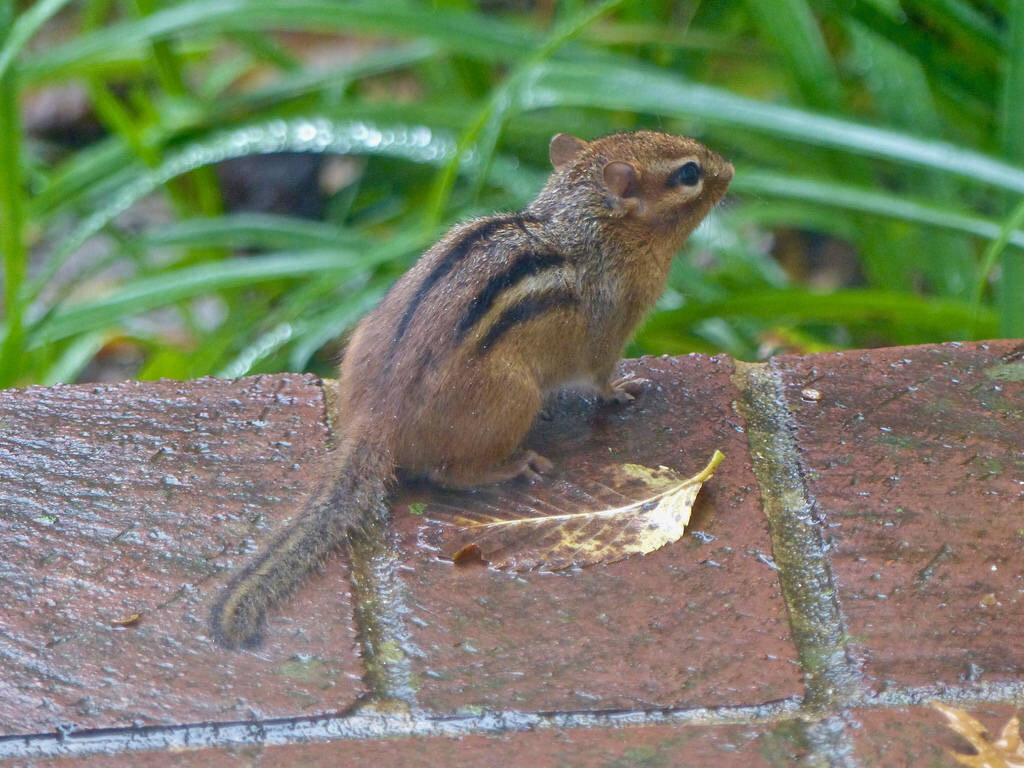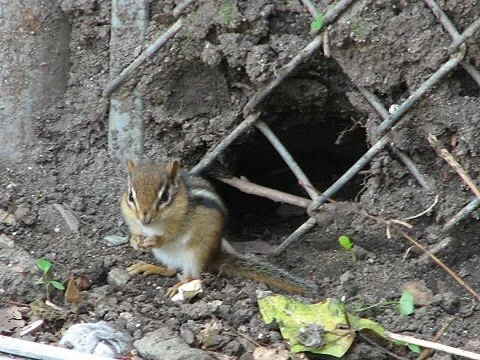Eastern Chipmunk (Tamias striatus)
Chipmunk Biology
Adult chipmunks reaches about 12 inches in length including the tail, and weight of between 2-5 ounces on average. It can climb trees well, but constructs underground nests with extensive tunnel systems, often with several entrances. Chipmunks prefer locations with rocky areas, brush or log piles, and shrubs to provide cover.
Chipmunk Behavior
Chipmunks feed on bulbs, seeds, fruits, nuts, green plants, mushrooms, insects, worms, and bird eggs and in such are a common garden pest in the Cincinnati area. The eastern chipmunk defends its burrow and lives a solitary life, except during mating season. During the winter, the chipmunk may enter long periods of torpor, but does not truly hibernate.
Chipmunk Concerns
Due to their seemingly never ending need for excavation, chipmunks can wreck havoc on landscaping, lawns, and gardens with their tunneling habits. They also will harvest, store, and consume many of the plants and crops from a garden causing a loss in bulbs, vegetables, flowers, fruits, and more.
Chipmunk Control
Huntsman Wildlife is a strong believer in living in a balance with the animals in our environment, but sometimes those animals cause problems that need to be addressed. The best way to control chipmunks on your property is a combination of trapping and exclusion. We do not use baits as chipmunks are a hoarding animal and a cache of rodent bait hidden on your property is not something anyone wants.




